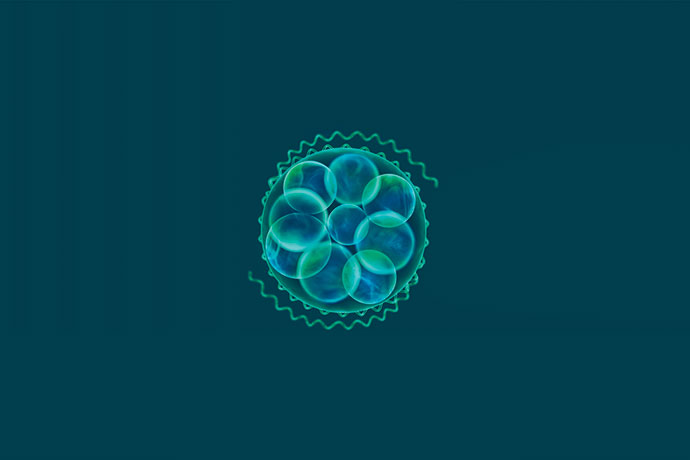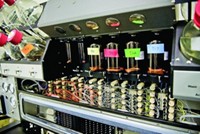Advertisement
Grab your lab coat. Let's get started
Welcome!
Welcome!
Create an account below to get 6 C&EN articles per month, receive newsletters and more - all free.
It seems this is your first time logging in online. Please enter the following information to continue.
As an ACS member you automatically get access to this site. All we need is few more details to create your reading experience.
Not you? Sign in with a different account.
Not you? Sign in with a different account.
ERROR 1
ERROR 1
ERROR 2
ERROR 2
ERROR 2
ERROR 2
ERROR 2
Password and Confirm password must match.
If you have an ACS member number, please enter it here so we can link this account to your membership. (optional)
ERROR 2
ACS values your privacy. By submitting your information, you are gaining access to C&EN and subscribing to our weekly newsletter. We use the information you provide to make your reading experience better, and we will never sell your data to third party members.
Biological Chemistry
Synthetic Biology
Rapidly emerging field opens many opportunities but also poses difficult challenges
by Britt E. Erickson
August 3, 2009
| A version of this story appeared in
Volume 87, Issue 31

The field of synthetic biology has the potential to solve some of the world’s most daunting challenges, from reducing reliance on petroleum to eliminating disease. But as with any new transformative technology, the potential benefits must be weighed against the possible risks.
At a two-day meeting last month in Washington, D.C., hosted by the National Academies, the Royal Society, and the Organization for Economic Cooperation & Development, an international group of stakeholders debated everything from the definition of synthetic biology to methods for engaging the public in dialogue. Concerns about regulatory oversight, safety, security, and intellectual property rights were also addressed.
Currently, only a few hundred companies are involved in synthetic biology worldwide, and the U.S. government is spending about $30 million per year on it, according to David Rejeski, director of the Synthetic Biology Project at the Woodrow Wilson International Center for Scholars. But the rapidly growing field is expected to attract more investment in the years to come. The situation is much like the early days of nanotechnology, which started out small but is now bringing in $1.6 billion per year in U.S. federal funds.
Unlike nanotechnology, which was clearly defined early on by the National Science Foundation, there is no universally agreed to definition for synthetic biology, Rejeski pointed out. In fact, synthetic biology means different things to different people.
Some people at the meeting called synthetic biology the equivalent of biological Legos. Synthetic biologists design and construct building blocks such as DNA, chromosomes, and other cellular components to create organisms with novel functionalities.
Those promoting the technology, such as James C. Greenwood, president and chief executive officer of the Biotechnology Industry Organization (BIO), said that synthetic biology is nothing more than an extension of genetic engineering. The difference is that genetic engineers manipulate genomes one gene at a time, whereas synthetic biologists construct entirely new biological systems from the ground up, redesigning cellular pathways to more efficiently produce fuels, catalysts, drugs, and other useful products.
Some advocacy groups referred to synthetic biology as a radically new, unpredictable technology with unquantifiable risks. They believe synthetic biology has the potential to create alien forms of life, and they point to the lack of government oversight.
Nearly everyone at the meeting agreed that it is important to engage the public in honest dialogue and include social sciences in synthetic biology research.
“Technology is created and used by human beings,” Arden L. Bement Jr., director of NSF, said in the opening keynote address. But, he added, to really understand technology, one has to understand human behavior. “With synthetic biology we have an opportunity to get this right from the outset, but not without a firm commitment to integrate the social, behavioral, cognitive, and economic sciences into our research agenda,” he said.
Bement emphasized NSF’s commitment to weaving social science and environmental studies into research involving emerging technologies. But when it comes to engaging citizens in genuine dialogue, current tools are inadequate, he said.

“Not surprisingly, not many people have heard about synthetic biology,” Rejeski noted. In a national phone survey and two focus groups conducted in Baltimore last year by the Synthetic Biology Project, close to 90% of the participants said they knew little or nothing about synthetic biology.
Many people have suggested changing the name of synthetic biology to make it more appealing to the public. “It was stunning to watch people react to the term synthetic biology. It pushed buttons that nanotech never pushed for them,” Rejeski noted.
But those working on commercial applications of synthetic biology say now is not the time to change the name. “It is only through dialogue that the public can actually become comfortable with the technology. Changing the name potentially delays the conversation, and frankly, we’d rather have the conversation now,” Kinkead Reiling, cofounder and senior vice president of corporate development at Amyris Biotechnologies, told C&EN during a press briefing sponsored by BIO that coincided with the meeting.
When it comes to safety, many researchers at the meeting said synthetic biology is inherently safe, emphasizing that synthetic organisms can’t survive and reproduce outside the laboratory. And because synthetic biology is an extension of biotechnology, it is adequately regulated, they noted. Nonetheless, they acknowledged that some modification of existing safety guidelines could be in order.
A 1975 conference held in Asilomar, Calif., was the first to address biosafety and the risks of genetically modified organisms. That meeting drove scientists to take responsibility for the risks of their research, said Jacqueline Corrigan-Curay, acting director of the Office of Biotechnology Activities (OBA) at the National Institutes of Health. It also led to federal guidelines that each institution receiving NIH funding for recombinant DNA research must follow.
The NIH guidelines currently do not cover synthetic nucleic acids, Corrigan-Curay noted, but the agency has issued a proposal to include them. NIH has concluded that synthetic biology has “not yet yielded organisms that present safety concerns that fall outside the current risk assessment framework used for recombinant DNA,” she said. “As the field develops, we will need to look at this again.”
NIH guidelines are followed closely around the world, participants noted. European Union regulations are “essentially shaped after the pattern of the NIH guidelines,” said Helge Torgersen, a senior researcher at the Institute of Technology Assessment of the Austrian Academy of Sciences. Likewise, the Japanese have followed similar guidelines, noted Takuji Wakita, director of the Department of Virology II at the National Institute of Infectious Disease, in Tokyo.
Torgersen agreed that new regulations are not necessary for synthetic biology at this time, adding that they could stifle progress. But he acknowledged that some adaptation of existing frameworks is needed, particularly with respect to biosecurity.
In the U.S., biosecurity concerns related to synthetic biology have been addressed primarily through NIH’s National Science Advisory Board for Biosecurity (NSABB). One of NSABB’s recommendations is to screen all purchases of biological agents for the potential match to something that is dangerous, noted Michael J. Imperiale, a member of NSABB and a professor of microbiology and immunology at the University of Michigan.
Imperiale emphasized the need for “better and more uniform screening tools so everybody is working on the same page to determine if something is dangerous or not.” He warned researchers, particularly those who make large pools of DNA sequences using molecular-shuffling techniques, “to be conservative regarding containment and be prepared for unintended outcomes.”
Regulating the equipment and supplies needed for synthetic biology projects to ensure biosecurity is not an option, Imperiale noted, because the tools are surprisingly low tech, widely available on the Internet, and relatively inexpensive.
In fact, a number of meeting attendees pointed out that a do-it-yourself (DIY) community of synthetic biologists has sprung up on the Internet, DIYbio.org, with the goal of making amateur biology socially responsible and safe. These self-proclaimed “biohackers” are tinkering with DNA in their basements and garages, trying to build novel organisms such as beer yeast that makes resveratrol, the heart-healthy compound found in red wine.
“We need to try and identify who is out there, especially in this DIY community, and engage them in this dialogue,” so that they are aware of the potential risks, Imperiale noted.
Closely related to biosecurity is an ongoing debate in the synthetic biology community over openness. The engineering and computer science communities, as well as the DIY folks, advocate living in an open-source world, one where things are given away for free. On the other hand, the biotech community, which is busily trying to secure intellectual property, such as patents, in order to get more funding from venture capitalists, wants to keep its research protected. The result is constant tension between the communities.
Innovation can happen only when information is shared, some participants argued. Others, particularly those from biotech companies, said obtaining patents and venture capital funding is key for them to deliver on the promise of synthetic biology.
One area that has attracted a lot of attention is production of cheaper, more efficient biofuels. Some observers say that much of the excitement around biofuels has to do with oil companies wanting to secure patents so they can own fuel—something they could never do with gasoline.
Synthetic Genomics—based in California and founded by J. Craig Venter, who is best known for his work sequencing the human genome—recently signed a multiyear agreement with ExxonMobil Research & Engineering to engineer superior strains of photosynthetic algae for the large-scale production of biofuels (C&EN, July 20, page 15). The oil and gas giant is expected to spend as much as $600 million over the next five or six years on the project.
Amyris is engineering yeast to produce a diesel molecule found in apple peels. The company expects to rapidly scale up the technology and have a large pool of diesel fuel by 2011, according to Reiling.
Other companies are using synthetic biology to engineer biocatalysts that will lead to novel, greener ways of making not only fuels, but also chemicals. Humanitarian efforts, such as engineering microbes to produce large quantities of a malaria drug called artemisinin, are also in the works. The hope is to produce a drug that is more affordable for developing countries.
Over the past few years, researchers have demonstrated the promise of synthetic biology, and “it is now our challenge to achieve this promise,” said Drew Endy, an assistant professor of bioengineering at Stanford University. This will require “focused investments in technology, science, and policy,” he said.





Join the conversation
Contact the reporter
Submit a Letter to the Editor for publication
Engage with us on Twitter